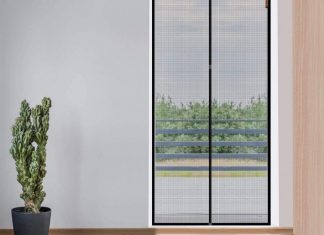As if we are reliving a plague of Biblical proportions, reports of bedbug infestations in offices and entire commercial buildings are becoming increasingly common. It is happening in big cities and small towns, in super modern skyscrapers and humble warehouses. There is no place safe from the marauding plague of bloodsucking parasites that travel freely from place to place in clothes, books, briefcases, coats, and other items.
All the unwitting carrier needs to do is visit a location that is suffering plague, and then the little blighters will hitch a free ride to a new location. Due to the rapid increase in infested locations, the chances of picking up a bed bug starter pack while in an office, restaurant, café, boutique, taxicab, airplane, or any other commercial location are quite high.
In a home, they will need an easy-to-reach supply of food, and therefore they are mostly found in the bedroom and specifically the bed, as their name implies. It is easiest to find bedbugs in large concentrations in the bed, and this is how they are identified. But the same isn’t true for the problem of office bedbugs.
What are Bed Bugs and What You need to Know About Bed Bug Infestation
Bed Bugs are nocturnal creatures, and because their hosts will be gone for the night, they will have to travel great distances in search of food. This leads them to explore far and wide, and this can make the problem of bedbug infestation even greater.
This also means that bedbugs will not be found in great quantities at any one point like they can be found in a house. This means that an infestation can go unseen for a very long time. They can also spread very quickly to neighboring offices or locations with whom one office does business frequently, as they will be carried in file boxes, books, briefcases, coats, etc.
But after a long time, the populations of bedbugs will reach critical mass, and they will no longer be able to hide their presence from humans. This will be hastened by the fact that they will have to adopt daytime feeding habits which are not well suited to their feeding habits and can lead to easy discovery despite their minuscule size.
Then comes the time to locate the bedbug colonies, and this is neither an easy nor pleasant task and is especially time-consuming. It is very easy for these vermin to escape a visual inspection, especially as they will be in very low numbers and scattered over a large space. In this situation, bedbug-sniffing dogs can be better suited to locating the beasts and their nests. But this is also not a 100% reliable testing method. But in combination with the two methods and performed by an experienced professional, the entire investigation has 80 to 90% accuracy.
Treating Bed Bug Infestation
Treating a bedbug infestation in an office building is another seriously problematic thing. One of the first and most effective forms of treatment, if performed often enough, is to vacuum everything and pay special attention to vacuuming upholstery, carpeting, and the joints of the furniture. The hollow spaces between cubical dividers, as well as baseboards and moldings, should also be vacuumed.
When vacuuming, it is important to consider that bedbug eggs are glued to surfaces when they are laid. This means that they may require some scrubbing to be properly removed. You can use the attachment with the thin head for scraping these eggs loose. Bear in mind that this method of removing the bed bugs and their eggs is only the most simplistic method of handling this task, and the results will depend on the stage of infestation and the thoroughness of the vacuuming job.
If the infestation has already reached an advanced stage, it will be necessary to take more drastic measures. For example, steam cleaning can deliver a powerful jet of steam which can penetrate deep into carpet fibers and all types of upholstery. This may also be used as a good way to minimize bed bug populations, but it will also fail to reach full elimination of the infestation. Neither vacuuming nor steaming will have any residual effects on eliminating the bedbug populations.
Next, you will need to treat all personal belongings, paper files, storage boxes, furniture and all other related items that can be more trouble to treat. These will be best dealt with offsite while the bedbug at the location is dealt with directly. Make sure that when you are transporting potentially infected items, everything is transported within sealed plastic bags to avoid any contamination while infestations are being controlled elsewhere on the premises.
Treatment for these items will be very different depending on the type of items that are being treated. For example, some items can be vacuumed, others can be heat treated, and others can possibly be steamed or dry cleaned. Once these items have been properly treated, they can be returned to the office building.
Wall voids and other room dividers can be steamed and/or treated with diatomaceous earth. As much as possible, try to disassemble the furniture and room dividers and anything else that will be treated for bed bugs. It is in the narrow cracks and seams that the bedbug likes to gather in large numbers. In some cases, the only option will be to fumigate the entire building. But there are downsides to this approach as well. For example, the bedbug is highly resistant to most types of insecticides, and at least one state has laws against fumigating an entire building.
Summary
A bed bug infestation can be especially difficult to control, so once these methods have been tried, they will have to be repeated many times over the next few months. At this time, you can have your location tested for bedbug one more time, and if necessary, the process will have to be repeated or find a local pest control solution provider to handle this for you. There will be a need for many new inspections over the years as the plague of bedbugs shows no signs of letting up in the near future.













